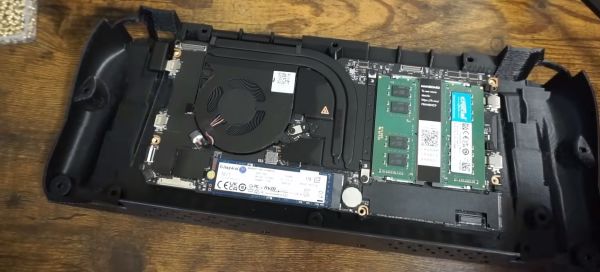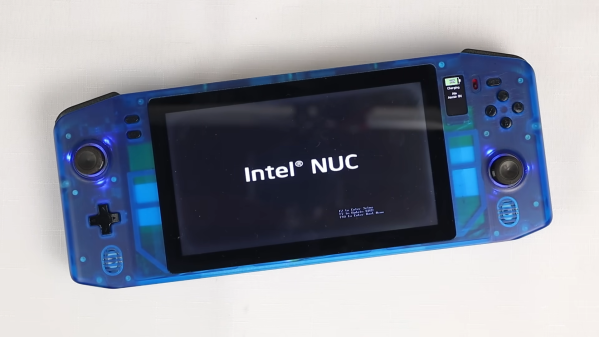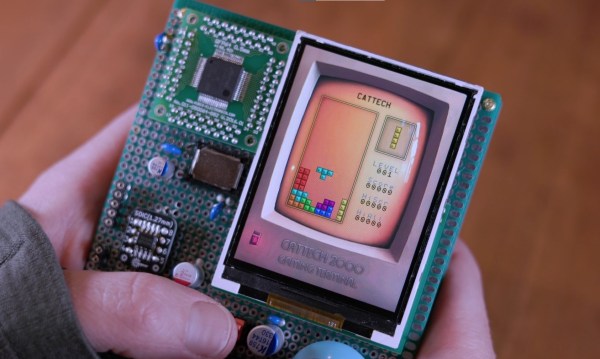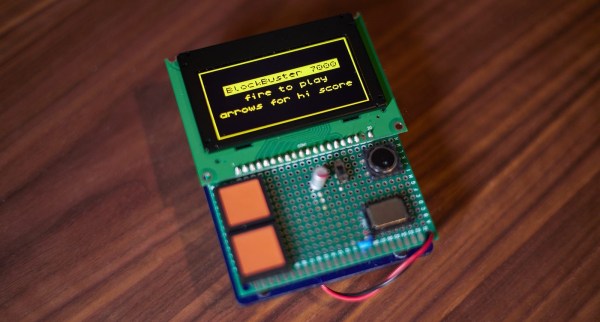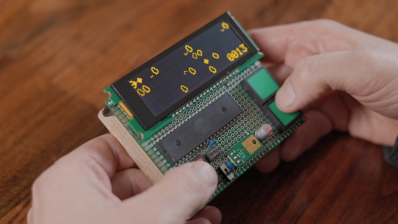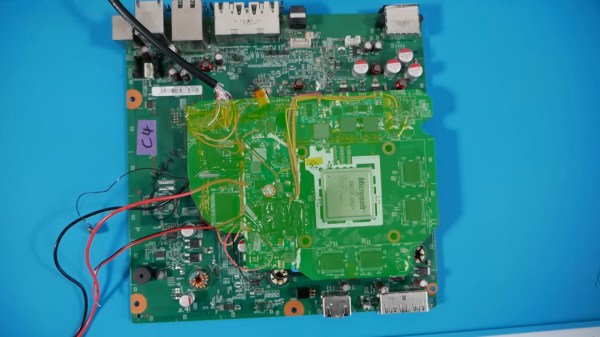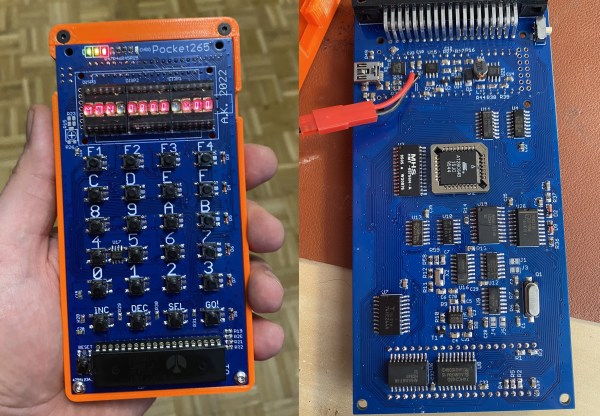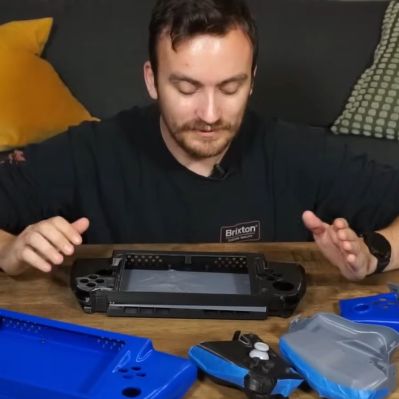
Building your own handheld gaming console has been a popular project for many years, but recently it has become significantly easier to get a lot of power into a small package. Like many others, [TommyB] made his own Raspberry Pi SBC-based handheld in the past, which results in a rather bulky and underpowered package. A more performant solution would be to stuff laptop guts into a handheld case, but until Framework came onto the scene this wasn’t easy and would get you a sloppy one-off solution. With [TommyB]’s current handheld project he uses a standard Framework laptop mainboard, along with the official battery to get a very capable gaming system.
Getting the ergonomics and fit for the components just right took many tries, but eventually a prototype shell was designed that fits the Framework mainboard, the battery, twin Framework speakers, an 8″ LCD panel from Waveshare (connected via USB-C to HDMI) and mechanical switches for the buttons. These switches connect to an RP2040-based board that runs the GP2040-CE firmware, allowing the operating system to detect it as an XBox controller. Although still far from finished, it shows just how beneficial standard laptop parts are, with a massive gap in the market where Framework could make its own handheld shell available. We’re looking forward to [TommyB] demonstrating the finished version of his Framework handheld, and the inevitable upgrade from the 11th-gen Intel mainboard to one of the sparkling new mainboards with even better specs.
Thanks to [Keith Olson] for the tip.
Continue reading “Using A Framework Mainboard For A Custom Gaming Handheld”

